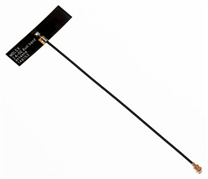I finally got some information on the antennas that I want to roadtest. These antennas are for Frequency / application : 2.4/5GHz Antenna – typical for Bluetooth, WiFi.
Here they are:
2.4GHz / 5GHz Wi-Fi Stand Alone Balance Antenna with MHF Connector, 9.00mm Width, Cable Length 100.00mm
- Product Name: 2.4/5GHz Balanced Flex Antenna
- Protocol: BLE, BT, Thread, Wi-Fi, Wireless Hart, Zigbee
- Type: Wi-Fi Antenna
- Cable Length: 100.00mm
- Length: 34.90mm
- Mounting Style Adhesive
- Net Weight: 0.574/g
- Packaging Type: PET Film
- Polarization: Linear
- Radiation Pattern: Omnidirectional
- Thickness: 0.10mm
- Width: 9.00mm
Click Here for More information
2.4GHz SMT On-ground MID Chip Antenna
- Product Name: 2.4GHz SMT OnGround MID Chip
- Protocol: BLE, BT, Thread, Wi-Fi, Wireless Hart, Zigbee
- Type: Wi-Fi Antenna
- Length: 3.00mm
- Mounting Style: Surface Mount
- Net Weight: 0.042/g
- Polarization: Linear
- Radiation Pattern: Omnidirectional
- Thickness: 4.00mm
- Width: 3.00mm
Click Here for More Information
Your thoughts about roadtesting these specific products would be appreciated. Thanks.
Sincerely,
Randall Scasny
RoadTest Program Manager



